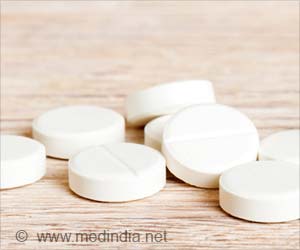A combination of bioactive peptides to effectively stimulate wound healing has been carried out by researchers.

"Using double-blinded in vivo experiments, we then applied the wound-healing peptide UN3 with a peptide created during a previous study, named comb1. We found that, together, the two out-performed all control groups, including the only FDA-approved growth factor-containing drug for treating diabetic wounds, becaplermin," said first author, Tatiana Demidova-Rice, PhD, now a graduate of the cell, molecular and developmental biology program at the Sackler School of Graduate Biomedical Sciences.
In December 2010, Herman and Demidova-Rice identified several peptides from a Clostridium histolyticum collagenase treatment of bio-synthesized extracellular matrix. The investigators then went on to cull key peptides and, from these, they created the peptide, comb1, possessing several strategic features, including its ability to stimulate angiogenesis by increasing blood vessel growth by 200% in vitro.
The second wound-healing peptide, UN3, identified in the current study, was created and modified from two naturally occurring peptides that are normally present in trace amounts and found in human platelet-rich plasma.
"The confirmation that these peptides could act synergistically to improve human wound healing moves our research one significant step closer to clinical application. We hope that someday soon, we may be able to help transform the way in which wound care is being delivered in civilian and combat settings," said Ira Herman, PhD, professor of molecular physiology and pharmacology at Tufts University School of Medicine. Professor Herman is director, molecular and cellular physiology graduate program at the Sackler School of Graduate Biomedical Sciences and director, Center for Innovations in Wound Healing Research, Tufts University.
"The wound-healing peptides should also prove strategic as we continue developing 'smart' devices or fully-vascularized living tissue constructs for burn patients or those patients suffering with diabetic plantar or venous stasis ulcers. Clinical trials using the peptides will be the next step," Herman continued. Tufts University has filed patent applications related to the wound-healing peptides.
Advertisement
Demidova-Rice is now at the Edwin L. Steele Laboratory for Tumor Biology in the department of Radiation Oncology at Massachusetts General Hospital. Additional authors include Lindsey Wolf, BS, formerly a research assistant at TUSM, now a graduate student working towards a PhD degree in the department of molecular genetics and microbiology at the University of Texas at Austin; Jeffry Deckenback, PhD, who was a postdoctoral fellow in the Herman lab while the work was being carried out; and Michael R. Hamblin, PhD, a principal investigator at the Wellman Center for Photomedicine at Massachusetts General Hospital and associate professor in the department of dermatology at Harvard Medical School.












